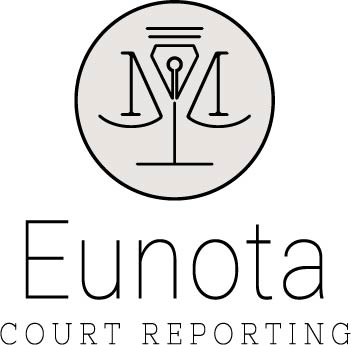Videoconferencing is Changing the Status Quo in New Brunswick
In-person meetings have always been the mainstay of the New Brunswick legal field, but the COVID-19 pandemic has pushed this sector into the realm of virtual meetings to maintain momentum on important files and Eunota is here to help with the basics. Meeting via telephone or video conferencing has many benefits for both clients and law firms, and drawbacks are minimal when good practices are employed.
Choosing a Video Conferencing Platform
There are many options for virtual meeting platforms and all perform the basic task of linking the video of two or more participants so they may see each other while speaking. The two most popular platforms in the New Brunswick legal field are currently Microsoft Teams and Zoom. Both are inexpensive options and can be synced to a Google Calendar for ease of scheduling. Zoom has the added benefit of “break-out rooms” where the host can create a virtual meeting space outside of the main space where a client can speak privately with their counsel while the other parties wait ― this mimics stepping out of the office for a short check-in during a procedure.
Audio Reliability for Recording Purposes
In our experience, Zoom and Microsoft Teams both have good audio for recording purposes, but the reliability is completely dependent upon the internet quality of participants. In the event that audio is breaking up due to a poor internet connection, Eunota has a toll-free telephone conference line available for use and is billed at $0.05/participant/minute to the firm conducting the examination. The telephone conference back-up option prevents the need for re-scheduling a meeting. We are here to ensure that everything runs smoothly!
Telephone Conferencing
Telephone conferencing is a great option for participants who are wary of computers or have an unreliable internet connection. Telephone audio is more reliable than video conferencing but is more expensive (usually about $100 CAD for a full-day discovery with four participants). Eunota has completed both hearings and discoveries using telephone conferencing without issue so long as the speaker introduces themselves before speaking as much as possible. The only downfall is that we cannot get a visual of the speaker for our transcript notes and this can cause an issue if there is cross-talk of several speakers who are not introducing themselves.
Housekeeping
It is critically important that the chair of the meeting (or stenographer) do a short housekeeping checklist to ensure the highest possible quality of recording. This includes a quick run through of the video conferencing platform, brief agenda, round table of introductions with names and roles, and most importantly a reminder to avoid interrupting and cross-talk as much as possible. In a virtual setting, it is easy to talk over one another due to signal delays – cross-talk makes for a complicated and unclear transcript. If there are delays, ensure that participants are waiting until they are sure the speaker is finished asking a question before responding and vice versa. It may feel weird to wait longer than usual before reciprocating in conversation, but the recording will result in a much higher quality transcript.
Oaths
One concern with virtual meeting was the ability to swear or affirm a client, but experience has shown us that we are able to do this virtually as well. If the client prefers to be sworn in, they may have a Bible or religious document in their presence and touch it while being sworn in by a lawyer over video. The same can be done with an affirmation ― the importance is that the oath is binding on the client’s conscience. Please see New Brunswick’s Commissioner of Oaths Handbook for more specific details.
Referencing Documents
In a normal legal meeting, sharing documents is as easy as passing it across the table but in a virtual setting, participants must adapt. The easiest way to show a document to a client is to bring it up on your own computer screen and click the “Screen Share” button on your video platform so that all video participants can see what you are referencing (and also follow your mouse pointer to exact locations in the document). Another method is to either send the files through the platform or email, although this option can take more time.
Marking Documents
Marking documents is a little more complicated than simply referencing one. In our experience, it is simpler to refer to a document by page number within the master document. An efficient way to do this is to employ the Bates numbering (or Bates stamping) system whereby each page has a unique identifier. Bates numbering is common in the U.S. legal sector.
If marked documents are preferable, the documents can be sent to Eunota before or after the meeting and a virtual sticker will be added to the file and sent back marked. Virtual stickers are preferable to printing, adding the sticker, and scanning so document integrity is maintained as much as possible.
Undertakings
Undertakings in a virtual meeting are business as usual. Eunota strives to provide a list of undertakings within 30 minutes of the meeting end via email.
Conclusions for the New Brunswick Legal Field
In summary, video conferencing is a fantastic way to meet with your clients not only during a lock down, but also in “normal” times when travel might be expensive or difficult. The main drawbacks with video conferencing is an unreliable internet source and if this is the case, it is best to employ the two-tiered approach of also having a telephone conference call at the same time. If you are interested in learning more or using Eunota Court Reporting to host your next video conference call, please contact us today!

